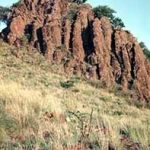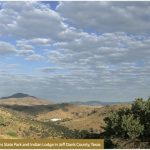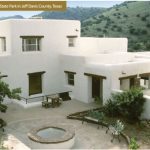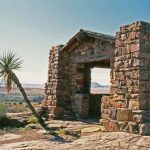State: Texas
Address 1: Highway 118 N., Park Road 3
City: Fort Davis
Zip: 79734
Phone: 432-426-3337
Open all Year: Yes
Number of Sites: 100
Electric Water: 34
Full Hook: 27
Camp URL: http://www.tpwd.state.tx.us/spdest/findadest/parks/davis_mountains/
Full Hook: Yes
About: Activities include camping, sightseeing, nature study, picnicking, hiking, backpacking, day and overnight equestrian use, mountain biking, and interpretive programs. Attractions include scenic drives, two scenic overlooks, and 4 miles of hiking trails connecting with Fort Davis National Historic Site. Stargazing after closed hours on Skyline Drive is allowed; registration required at headquarters – activity fee applies.
The northern half of the park, north of State Highway 118, has been designated the Limpia Canyon Primitive Area, a special use area (fee required). Currently, it includes 10 miles of backcountry hiking trails with primitive tent campsites, primitive equestrian campsites, a secured parking area, a host campsite. Developed facilities south of State Highway 118 include restrooms with and without showers; campsites with water; campsites with water and electricity; campsites with water, electricity, sewer, and cable TV connection; a group picnic area with tables, an outdoor amphitheater (capacity 200 – no fee); picnic sites; a playground; an interpretive center (staffed by volunteers); 9 miles of hiking trails (not including the Limpia Creek Primitive Area) ; and a Texas State Park Store. Special rates are available (Contact the park for information). A self-registration station is available at the headquarters for visitors arriving after office hours and/or park host duty hours. Campsite availability and status information are posted each evening.
Within Davis Mountains State Park is the Indian Lodge, built by the (CCC) during the early 1930s. Indian Lodge has 39 rooms, a restaurant, and a swimming pool (for Indian Lodge guests only), meeting rooms, a Texas State Park Store, and 24-hour staffing.
Extremes of altitude averaging 1-mile high produce both plains grasslands and pinyon juniper-oak woodlands. Montezuma quail, usually farther west, are regularly observed in the park. Scattered stands of ponderosa and the more common pinyon pine, mixed with oak and juniper, cover higher elevations. During wet years, the park abounds in wildflowers. Emory and gray oak and one-seed juniper are the most common trees in the park. Emory oak is predominant along Keesey Creek. Scarlet bouvardia, little-leaf leadtree, trompillo, evergreen sumac, fragrant sumac, Apache plum, little walnut, treecholla, Torrey yucca, catclaw acacia, and agarito are conspicuous shrubs, some of which flower abundantly.
The interpretive center overlooks the wildlife watering station where scrub jays, white-wing doves, curve-billed thrashers, and rock squirrels are among the most common wildlife seen.




